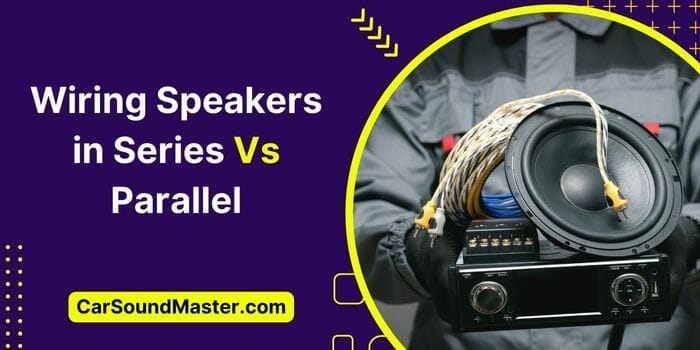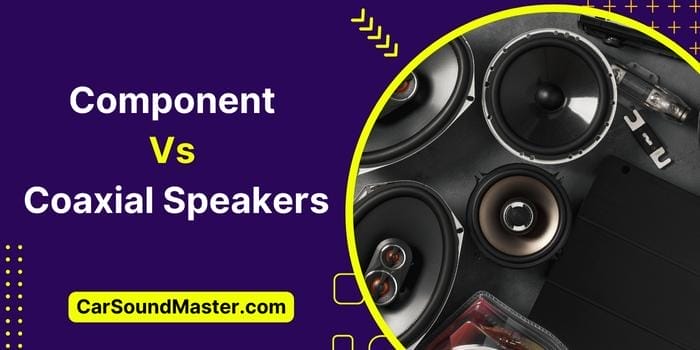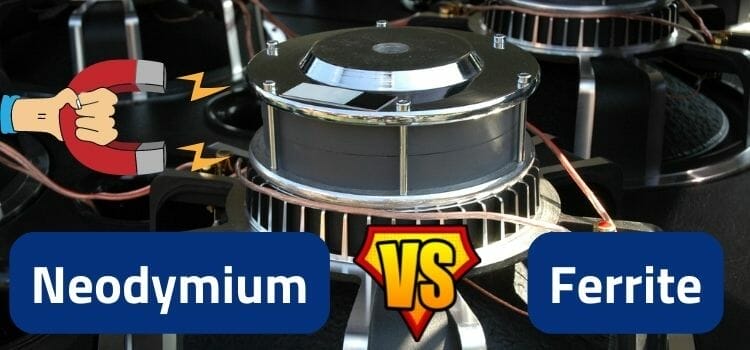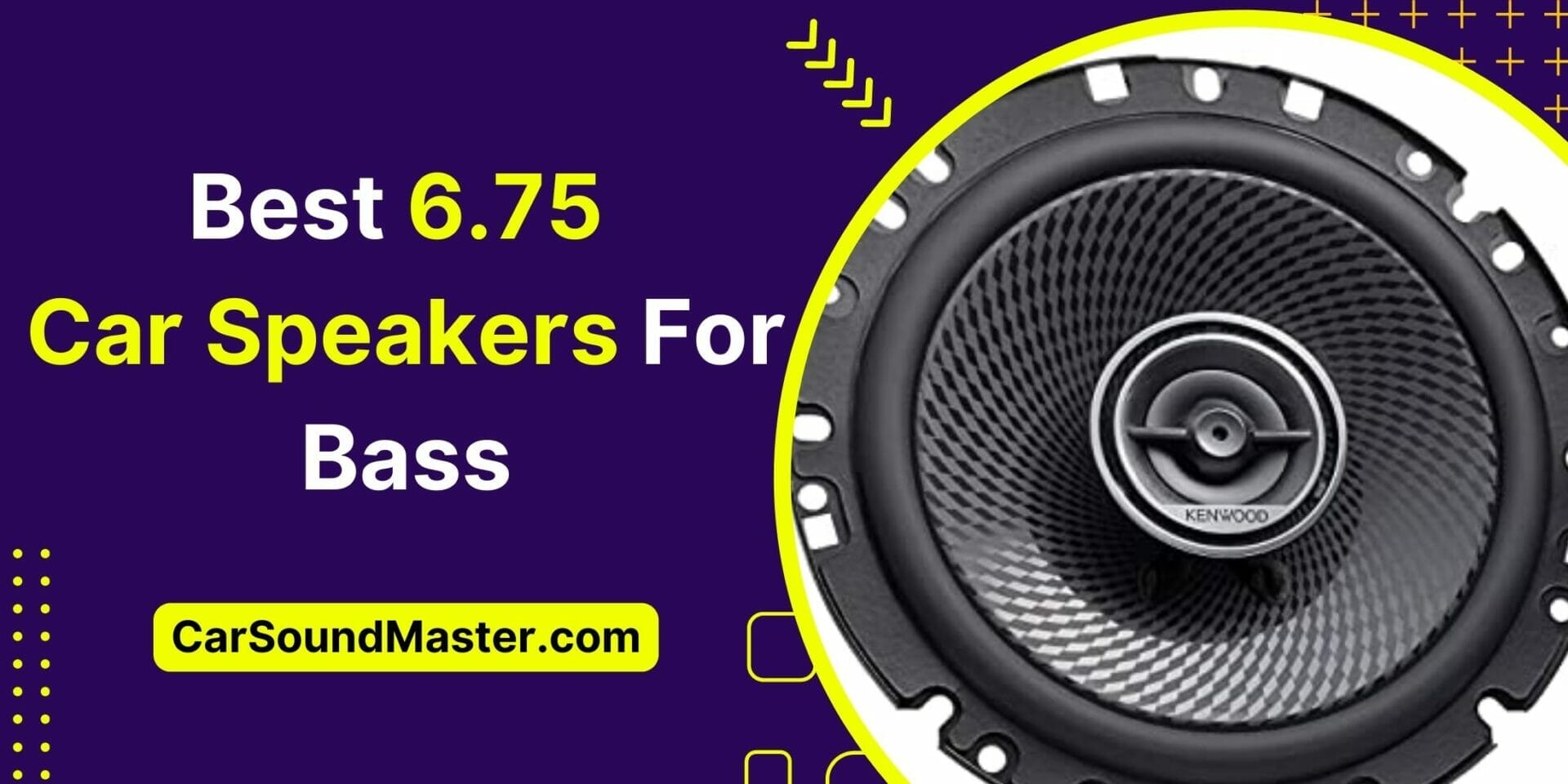Wiring Speakers in Series Vs Parallel – The Best Practice?
What do you think makes for a perfect sound system whether be it in a car, a gamer’s rumpus room, or an entire home? Is it just a pair (or maybe an X number) of top-notch speakers and amplifiers?
Well, that’s right, but that still just makes for 50% of it all. The remaining 50% is about how’s it all connected.
See, you also need to do up a little bit of engineering, some math, optimize the terms (i.e. voltage, impedance, ohms, watts/channels, etc.), and finally decide if to wire up speakers in series, parallel, series-parallel, or however else.
Let’s join the points.
Wiring Car Speakers in Series Vs Parallel – The Better Option?
To answer this question, let’s first understand some of the absolute basics.
Things to Understand First
- To get the best performance out of your stereo set, you must ensure the impedance of your speaker(s) exceeds or at least matches the impedance rating of your amp i.e. the lowest it can drive.
- Impedance, in the simplest of terms, is a property of speaker/amp to resist (i.e. impede) the inflow of energy; it’s usually rated in nominal terms and ranges from 2 Ohms to 16 Ohms for most of the speakers and amps as well.
- Wiring speakers in series increases the impedance and decreases the voltage per speaker; wiring in parallel does altogether opposite.
- Doubling up the power of a speaker never doubles up the loudness. It means you only have 2X the energy running in now which translates into a 3 dB difference i.e. just a meager 23% uproar in sound intensity/loudness.
- Volume never adds up in exact math terms. So for a 2X increase in loudness, you need at least 10X the Watts inflow to the speaker(s).

OK with that? Let’s now dive into the crux.
How to Wire Speakers in Series?
As the name also suggests, wiring in series means connecting your sound set in a chain-like method representing a series of speakers interconnected with one another.
The Method
While making a series of wiring:
- You go from the positive terminal of your amp running it through to the positive of the first speaker.
- The negative, then, of the speaker goes to join the positive of the next speaker; the process goes on for all the X number of speakers.
- Finally, when it’s down to the last speaker, its vacant negative goes back and meets the amp at its negative terminal.
The final shape of series wiring presents you with your amp joining the first speaker at its positive lead meeting the last one at its negative while all the speakers join hands as described in bullet no. 2.
Impedance in Series Wiring
It’s all just simple math here. As the series connection makes for a chain-like structure, the resistance simply adds up with the increase in the number of speakers connected. To calculate the total impedance at the amplifier, just add up all the speakers’ impedance.
For example, you’ve got 3 speakers each one with a 4 Ohm impedance rating wired up in series which means you’re presenting a resistance of 12 Ohms to the amp.
Sound Quality of Speakers in Series
The quality and intensity of sound in series speakers is almost always low and laggard and there are some legit reasons for it i.e.
- Speakers in series share a single circuit and present more load to the amp resulting in a poor flow of energy.
- While in a series connection, a speaker receives only a portion of the total power coming through the amp.
- If you’ve connected speakers with different impedance ratings in series, there may happen a phenomenon called Crossover Shift which also ultimately affects the sound quality.
What is a Crossover Shift?
In simple terms, Crossovers are capacitors or inductors that dictate sound energy to speakers based on their load impedance capability.
They may pose regulations or even block certain frequencies that are unwanted or beyond a speaker’s control.
So when speakers with different impedances are connected in series, the crossovers dictate the next components of the series and there are high chances of a Crossover shift taking place.
Most of the coaxial, multiway cabinet speakers, tweeters, woofers, subwoofers, etc. aren’t all-in-one machines.
For example, tweeters are usually laggard in maintaining low bass, whereas woofers or other midrange speakers are mostly incapable of producing high frequencies. So speakers built with combined Crossover mechanisms are often preferred for installation in cars, etc.
That’s one big reason why some unusual sound distortions, etc. happen usually while driving cars and in likewise scenarios.
How to Wire Speakers in Parallel?
Take the word parallel out and replace it with straight, maybe. That’s how, perhaps, wiring in parallel may look like. The simplest, I’d say.
The Wiring Method
With no loops or curls whatsoever, the parallel wiring only involves connecting all the positives to the positive and all the negatives to the negative on the amp.
You can simply group the positive wires of all of your X number of speakers and connect the group to the positive terminal on the amp. The same goes for the negative side as well. This makes for a pretty straightforward setup in the end.
Impedance in Parallel Wiring
Contrary to what happens in a series setup (i.e. all the impedance sums up), in parallel wiring, you need to sum up all the impedance and divide the value by the number of speakers attached.
For example, if you’ve got 4 speakers each rated for 16 Ohm connected in parallel, the total resistance/impedance presented to the amp will only be 16 Ohm i.e. 16+16+16+16 = 64/4 = 16 Ohm.
In the case of 3 speakers each of 4 Ohm rating, the total impedance will be 4 Ohm i.e. 4+4+4 = 12/3 = 4 Ohm.
For Speakers with Different Impedance Ratings
If there are speakers with different impedance ratings attached in parallel, the total impedance at the amp can be calculated by:
Total Impedance = 1 / 1/Impedance#1+1/Impedance#2+1/Impedance#3 and so on…
For example, if 4 speakers with impedance ratings of 2 Ohm, 4, 8, and 16 Ohm are connected in parallel, the total impedance will be 1.067 Ohm.
Here’s how that comes.
Total Impedance = 1/ 1/2+1/4+1/8+1/16
= 1/ 0.5+0.25+0.125+0.0625
= 1/ 0.9375
= 1.067 Ohm.
Keep in Mind
When going for parallel wiring, you should first check the impedance rating of your stereo or amplifier. This is because your speakers’ combined resistance should always be equal to or higher than that of the amp.
For in the above example i.e. 1.067 Ohm, you should check if your stereo can drive less than 2 Ohm and, still, remain stable. If not, you need not go with parallel but with series or series-parallel wiring in that case.
If you can’t find your speakers’ or amp’s impedance rating, check the back label of the components or search through the internet via their model numbers.
Sound Quality of Speakers in Parallel
Ideally, the parallel wiring is always the best and the most recommended way of setting up your stereo set as the sound generated here is way better than via series speakers. Here’s why:
- As described above, the impedance at the amplifier cuts down to a noticeable extent in parallel wiring. This results in a rich flow of power to all the speakers which translates into a richer sound output.
- Each speaker wired in parallel receives not a portion but the same voltage inflow.
- In parallel wiring, even the crossovers see and dictate the load resistance of just that one speaker not affecting the entire series and so not distorting the sounds.
Pros and Cons of Wiring Speakers in Series Vs Parallel
Let’s find out!
Car Speakers in Series
Here is.
Pros of Wiring in Series
Given here are some of the pluses of series connections.
- Because there’s a high amount of impedance presented to stereo or amplifier in series setup, the health and safety of your amp is, kind of, ensured.
- Voltage handling rarely becomes an issue in this setup.
- For speakers with different impedance ratings, unless you’ve double-checked for parallel wiring, setting up a series connection is a better go-to option.
- When setting up ceiling speakers, arrays, or likewise setups, series wiring is comparatively cheaper and the go-to wiring method.
Cons of Series Wiring
With one sure-shot disadvantage of having the power and volume always running at a loss, here are some other cons of wiring speakers in series:
- A miniature failure somewhere in one speaker can damage the entire sound system as that may work as a hole in the complete series.
- Additional crossovers may be required to match the speakers’ impedance in the series, or otherwise, the uneven current flow can damage one or all.
- Decent impedance matching can become a real effort.
- Low power handling capacity, perhaps.
- Can become a complex loopy setup.
Car Speakers in Parallel
Here is, let’s find it.
Pros of Parallel Wiring
Some of the notable advantages of parallel wiring are:
- Perfect go-to option if you want more return (i.e. high sound intensity/volume) on your investment (i.e. maximum power).
- No compromise on the quality of sound no matter what speaker type.
- A single failure point stands single and doesn’t as such affect the subsequent components i.e. if one speaker fails, the other(s) will still be up and running.
- You don’t as such need to match speakers’ impedance. You only need to check if the total impedance is equal to or higher than that of the amp and you’re good to go.
- The simplest setup process with high power handling capability; much lesser overall impedance in case of multiple speakers.
Cons of Parallel Wiring
Some negatives of this method include:
- May fail to become a feasible wiring method if there are so many speakers as that will eventually reduce the overall impedance.
- There’s always a higher risk of overriding a speaker and damaging it in case of uneven resistance.
- Rick of damaging stereo or amp is always there due to much lesser overall impedance which may make the amp overdrive than its capacity.
Parallel Wiring vs Series – Finish Line
So… that’s one healthy bunch of information on wiring speakers in series vs parallel. As you just got through it, I hope it’s now clear to you which one should be your go-to option.
To give you a recap, wiring speakers in parallel is the better of the two choices for so many reasons. Speakers when in parallel always put much lower resistance at the amp, which translates into max power per speaker and thus louder sound.
On the contrary, wiring speakers in series pose much higher impedance to the amp resulting in less voltage per speaker and thus lesser volumes.
But because you should always exceed or at least match the total impedance of speakers with that of the amp; so when going with parallel setup, you should always double-check the final overall impedance of the speakers to make sure it’s not less than that of the amp.
Some of the single-cone mid or full-range speakers, tweeters, horn tweeters, woofers, subwoofers, etc., with no inbuilt crossover components, can still make for a better end result even if wired in series if in-home theatre-like big settings with unlimited/max power supply.
Have a nice day.







